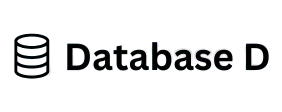The key construction of a hypothesis can be presented as follows: “If… then…” . It can be simple or more complex and detailed. The most important thing is that you should put forward only clearly developed and thought-out assumptions. But you should not describe many different options for achieving the goal. Since resources, time and effort can be spent on testing one hypothesis.
For example, “ If you reorganize
The products on the store shelves and place more expensive qatar phone number library and high-margin products at the eye level of the visitor, and cheaper (less profitable) ones on the very top or bottom shelves, then the expensive products will start to sell better.” ” Giving customers the ability to leave product reviews on your website can increase sales by 22%.” In the end, it is necessary to define the basic principles of creating and testing hypotheses for their subsequent use within the HADI cycle.
These include: Precision and specificity of
The hypothesis The assumption must be built clearly, without “water”, and also with a certain time frame. “Make calls to clients” – there are no deadlines here. “Make a mailing to the database by 15.05” – clear deadlines . Measurability. You need to understand the first option is one of the most whether the result can be determined and how to do it. There should be specific numbers, a comparison of indicators, and not an abstraction that is impossible to achieve.
Make sure the hypothesis is achievable
Alignment with Purpose: Don’t waste time on useless assumptions that won’t get you any closer to achieving your goal . Components. It is not worthwhile to explore global goals, check and test hypotheses that require large investments in time and resources buy lead at once. It is better to break down assumptions into small, easy-to-process parts. of your hypothesis and development of actions. The task of the manager and the team is to start implementing the plan and ensure that the purity of the experiment is not violated. In the process of testing and developing a hypothesis, you need to perform certain actions that you planned from the start of the project. Because other actions or parallel testing of another hypothesis that suggests a similar result can affect the final conclusions.

